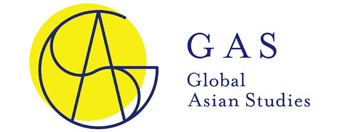Between Increasing Research Activities and Constrained Credit Course Offerings (1)
Professor Shigeto Sonoda (Institute for Advanced Studies on Asia and Graduate School of Interdisciplinary Information Studies, The University of Tokyo)
The Global Japan Studies Research Network has been regularly organizing a variety of events and publicizing research activities conducted in and outside the University of Tokyo quite effectively. At the same time, a Global Japan Studies Program, consisting of core courses and elective courses, has been put in place. The two wheels of research and education are now set in motion. Constructions of collaborative relations with international partners including Princeton University and the University of Chicago are proceeding well, and experimental joint seminars and workshops as well as joint summer programs are underway. These facts suggest great change from two years ago when the “Global Japan Studies expert committee” was established at Division of International Affairs of the University in 2012.
Expectations and evaluations from outside are also gradually changing.
As introduced in my last essay, when the University of Tokyo’s application for JSPS’s Top Global University Project was approved in 2014, JSPS highly appraised our proposal by commenting that “it merits commendation to establish the Global Japan Studies Program that enables learning about ‘Japan’ in English.” A number of universities overseas have proposed to establish collaborative relations with us specifically in the field of Japanese Studies such as accepting students from overseas and guest teaching abroad.
The development of this program engenders several contradictions. One of them is that information of GJS’s lively research activities is not reaching students enrolled in GJS Program.
Even if international collaborations progress well and we organize more and more research meetings, in case there is no increase in the number of people who participate or want to participate in these activities, it will end up being a scramble for audience among individual research meetings. When there are multiple events scheduled simultaneously, it becomes difficult for even significant meetings to get audience. If we cannot build up a structure for delivering event information to as many people as possible and providing incentives for people to come, “involution” may take place.
On the other hand, there exists a need among students enrolled in the Program for more diverse course offerings. Although the two-part curriculum of core courses and elective courses are in place, there are resource constraints, such as funds for lectureship, that limit further increase of elective course offerings, and students’ needs are not completely met. A lesson learned from administering the University-wide Student Exchange Program (USTEP) is that international exchange students studying at UTokyo have diverse interests about Japan. However, departments offering courses on Japan in English are in a situation where fund raising for honorarium is difficult.
Here is the “contradiction” between increasingly research activities on one hand and severely constrained credit course offerings on the other. Then how to deal with it? I want to discuss its solutions next time.



